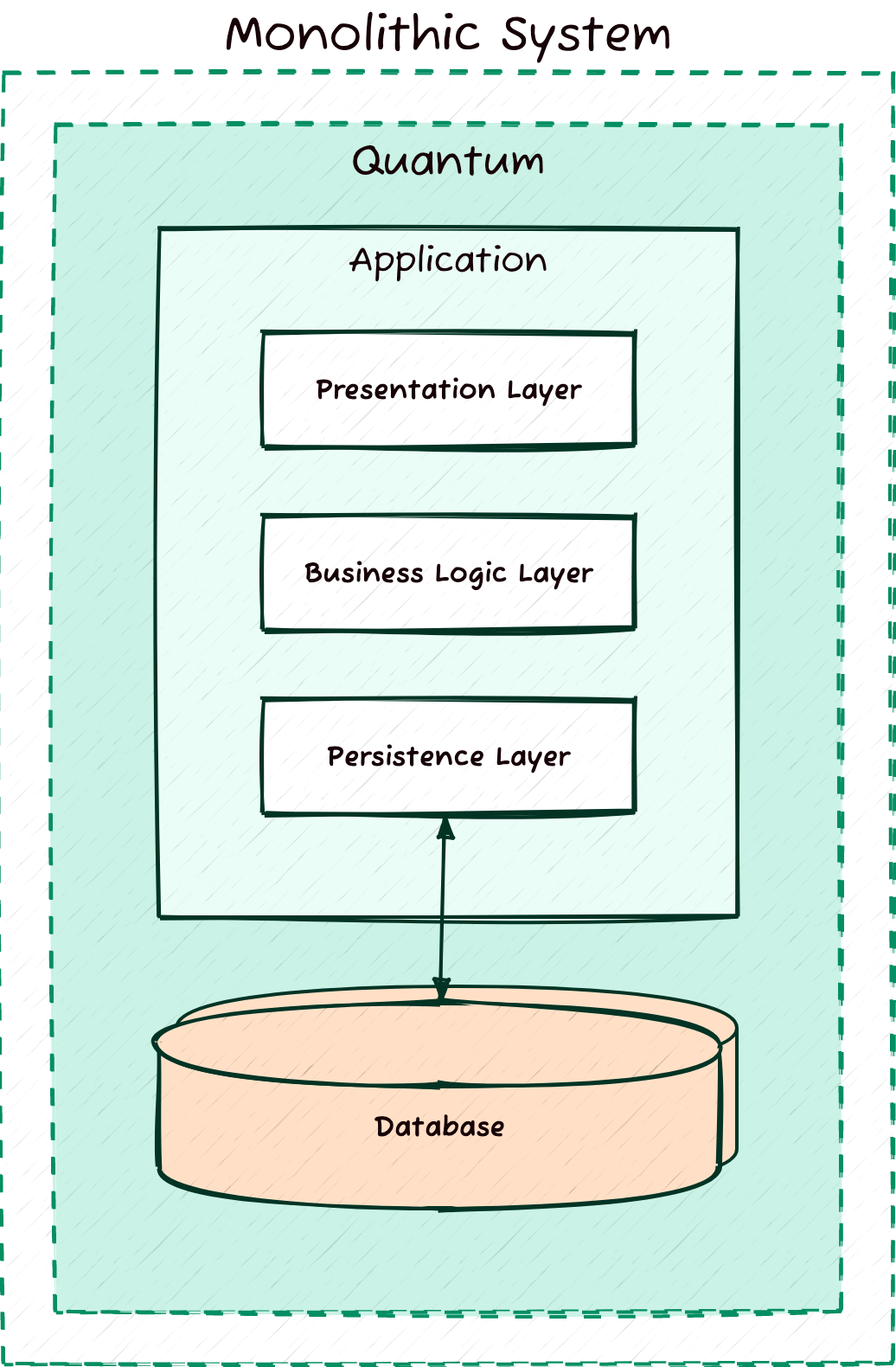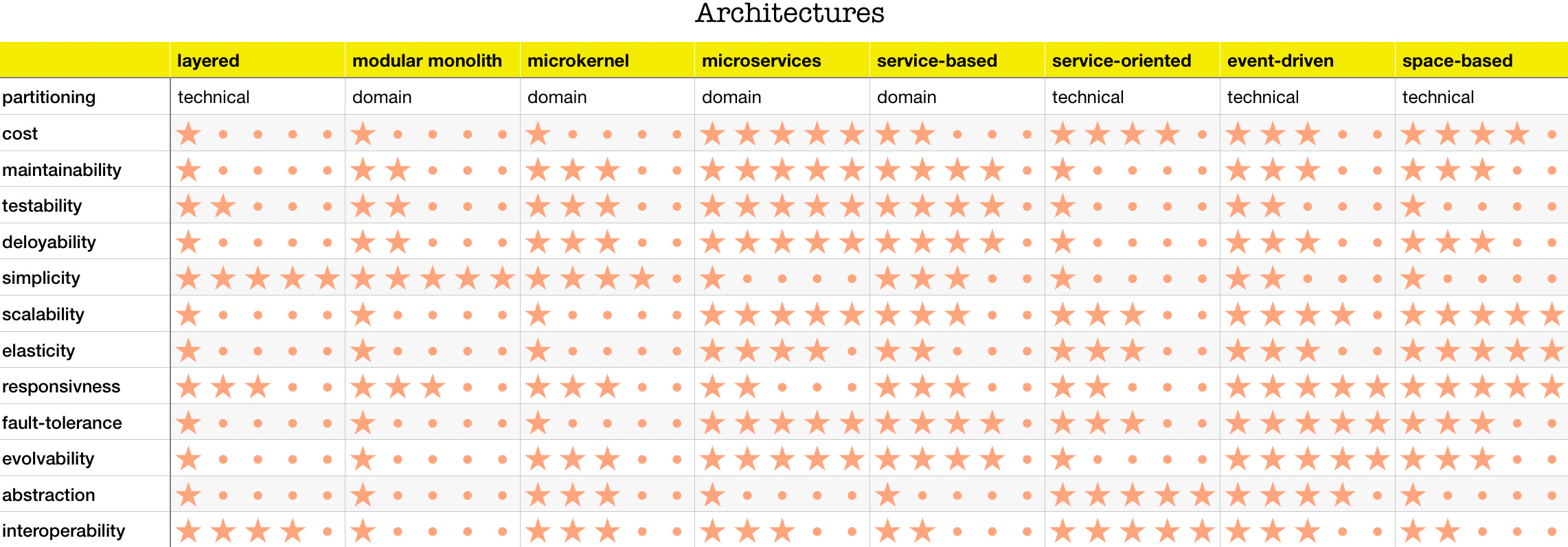Layered architecture
Software architecture
Layered architecture is one of the most commonly used architectural styles in software development. It organizes a system into a hierarchy of layers, each responsible for a specific part of the application. The main goal of this approach is to achieve a clear separation of concerns, where each layer focuses on a particular function, making the system easier to develop, maintain, and scale. Layered architecture is especially prevalent in enterprise and web applications, where complexity requires well-structured modularity and maintainability.
Invite a friend & score a $50 voucher! 🎉
Together, we’ve built an incredible community, and now… it’s time to grow it even bigger!
Key Characteristics of Layered Architecture
Layered architecture is built around the principle of separating responsibilities into distinct layers. Each layer serves a unique function and typically interacts only with the layer directly above or below it. This promotes modularity and encapsulation, where each layer is responsible for a specific concern and can evolve independently as long as its interface remains unchanged.
One of the defining characteristics of this architecture is hierarchical communication, where each layer passes data and requests sequentially from one to another. For example, the Presentation Layer communicates with the Business Logic Layer, which in turn interacts with the Persistence Layer. This controlled communication structure ensures that different parts of the system do not mix their concerns, keeping the design clean and organized.
Another key feature is encapsulation. Each layer hides its internal implementation details from the others, exposing only a well-defined interface. This makes it easier to maintain and update individual layers without affecting other parts of the system. The separation of layers also encourages reuse, as developers can easily reuse entire layers, such as the Business Logic or Persistence Layers, across different projects.
Common Layers in Layered Architecture
While the number and naming of layers can vary depending on the application, a typical layered architecture consists of the following three main layers.
Presentation Layer: This is the top layer that handles everything related to user interaction. It is responsible for rendering data, capturing user inputs, and displaying results. In web applications, the Presentation Layer includes technologies like HTML, CSS, JavaScript, or mobile front-end frameworks. The goal of this layer is to present data to the user and send user requests to the underlying layers.
Business Logic Layer: The core of the system resides in the Business Logic Layer. It contains all the application’s business rules, workflows, and logic that determine how data is processed and transformed. For example, in an e-commerce system, this layer would handle tasks like processing orders, applying discounts, or calculating tax. It takes requests from the Presentation Layer, processes them, and communicates with the Persistence Layer for data retrieval or storage.
Persistence Layer: The Persistence Layer is responsible for managing the system’s data. It handles data storage and retrieval, usually interacting with databases or external storage systems. This layer abstracts the complexities of data management, allowing the Business Logic Layer to focus on core logic without dealing with low-level database operations.
Advantages of Layered Architecture
One of the main advantages of layered architecture is its modularity, which makes it easier to develop, maintain, and test each layer independently. By isolating concerns in separate layers, teams can work on different parts of the system simultaneously, improving development efficiency. For example, front-end developers can focus on the Presentation Layer, while back-end developers work on the Business Logic and Persistence Layers.
Another advantage is a separation of concerns, which simplifies maintenance. Since each layer has a single responsibility, changes in one part of the system don’t affect others. For example, changes in the database structure would only impact the Persistence Layer, leaving the Presentation and Business Logic Layers untouched.
Layered architecture also promotes reusability. Since each layer is designed to function independently, entire layers can be reused in different applications with minimal modifications. For example, the Business Logic Layer could be reused across different user interfaces, such as a web or mobile app, without changing the core functionality.
Furthermore, testability is improved because each layer can be tested in isolation. Developers can write unit tests for the Business Logic Layer without worrying about the user interface or the database, ensuring that business rules work as expected before integrating them with other layers.
Disadvantages of Layered Architecture
Despite its many benefits, layered architecture also has some limitations. One issue is performance overhead. Since requests and data must pass through multiple layers, this can introduce latency, especially in systems with many layers or in applications that require real-time performance. Each additional layer adds some overhead to the process, which may be undesirable in time-sensitive systems.
Another disadvantage is that layered architecture can become rigid as the system grows. While the separation of layers brings flexibility, it can also lead to tight coupling between layers if not properly designed. In some cases, developers may bypass layers, causing dependencies that violate the layered architecture principles and making it difficult to modify one layer without impacting others.
In smaller applications, the architecture may feel over-engineered. For simple projects, dividing the system into multiple layers can introduce unnecessary complexity, making it harder to maintain or modify than a simpler architecture would allow.
Architecture Quanta in Layered Architecture
When considering the concept of architecture quanta—the smallest independently deployable unit—in a layered architecture, the system typically has a quantum of 1. This means that the entire application is deployed as a single unit, and changes in one layer often require redeploying the whole system. Although layers are logically separated, they are often tightly integrated into the same deployment, which limits the flexibility of updating individual layers independently.
In certain variations, such as N-tier architecture, layers can be deployed on different physical infrastructures (e.g., the Presentation Layer on a web server, the Business Logic Layer on an application server, and the Persistence Layer on a database server). However, even in this scenario, the logical quantum often remains unified, meaning changes in one layer necessitate redeployment of the entire system. This contrasts with more modular architectures, such as microservices, where individual components are independently deployable.
Variants of Layered Architecture
There are several variations of layered architecture that adapt to specific requirements. One common variant is N-tier architecture, where each layer is deployed on separate servers or tiers, providing more scalability and security. For example, the Presentation Layer might run on a web server, while the Business Logic Layer operates on a separate application server. This physical separation allows for independent scaling of each tier.
Another variation is Hexagonal Architecture (also known as "Ports and Adapters"), which isolates the Business Logic Layer at the core of the system and defines interfaces for interacting with external systems, such as user interfaces or databases. This approach further decouples the core logic from external dependencies, allowing greater flexibility and testability.
A similar approach is Onion Architecture, where the core business entities and rules reside at the center, and other layers such as data access and user interface surround it. This design emphasizes the importance of isolating business logic from external systems, ensuring that changes in those systems do not impact the core application logic.
Summary
Layered architecture is best suited for applications that require a clear separation of concerns and long-term maintainability. It works well in systems where the user interface, business logic, and data management need to be kept independent from each other, making it easier to manage and scale as the system evolves.
This architecture is particularly useful in large, enterprise-level applications, web applications using MVC (Model-View-Controller), and systems where different teams are responsible for different parts of the system (e.g., front-end and back-end development teams). It is also a good choice when there is a need for clear boundaries between layers to facilitate independent development, testing, and scaling of each component.





